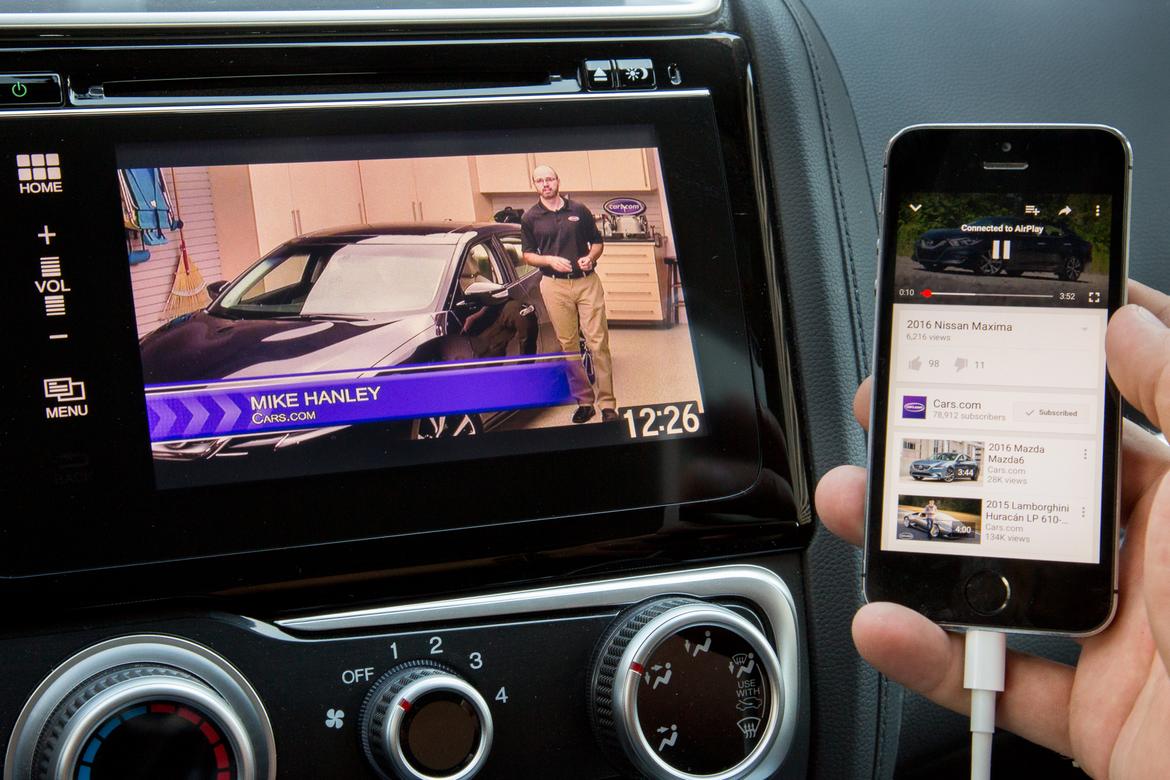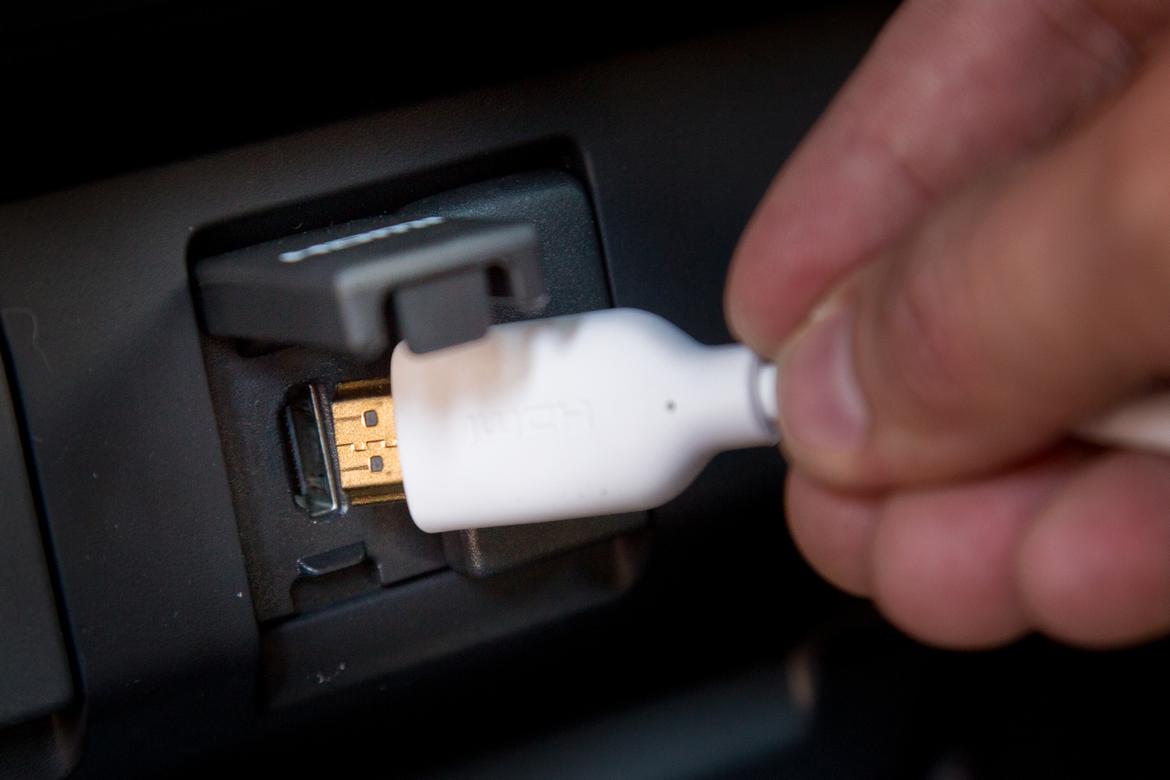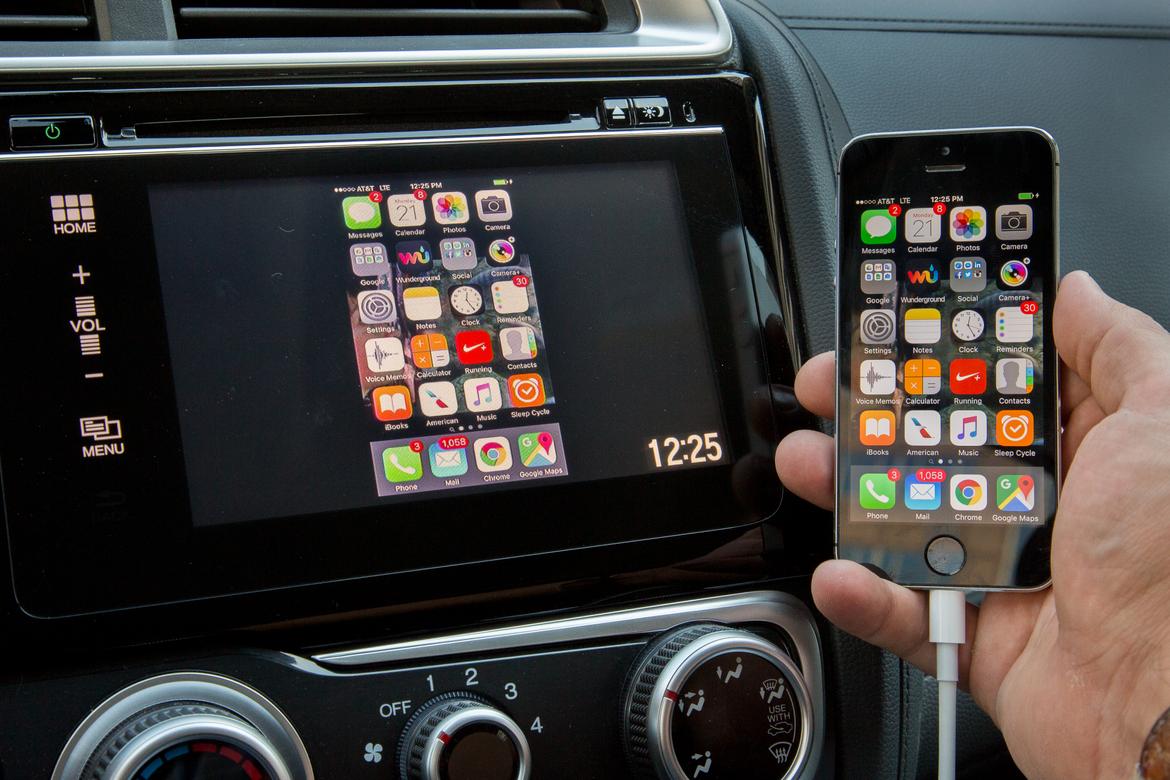By Mike Hanley
on September 23, 2015

2015 Honda Fit;
Cars.com photo by Evan Sears
HDMI ports are pretty commonplace in the world of consumer electronics, but less so in the automotive realm. That's starting to change, though; they've even found their way into relatively inexpensive cars like Cars.com's long-term Honda Fit. The port is included on EX and EX-L trim levels, which also come with a 7-inch touch-screen multimedia system, and it lets you play audio and video from any device that outputs those signals through an HDMI cable, according to Carl Pulley of Honda technical public relations.
Connecting an HDMI source is straightforward. First, I plugged a Type A HDMI connector into the Fit's HDMI port, which is at the base of the dashboard next to the standard USB port. I connected the other end of the cable to a Lightning connector adapter so I could plug it into my iPhone, which served as my media source for this test. After selecting HDMI on the Fit's touch-screen, an image of my phone screen appeared on the dashboard display. Whether swiping on my phone to a different page of apps or opening one of them, the dash screen responded in kind.

2015 Honda Fit; Cars.com photo by Evan Sears
The connection, however, doesn't let you use the touch-screen to interact with your content; you have to use the device itself, according to Pulley. That more sophisticated capability is present in services like Apple CarPlay and Android Auto, both of which are rolling out on model-year 2016 cars, and HondaLink, which uses your smartphone to enable navigation functionality, among other features.
I noticed some color inconsistencies between my phone's screen and the duplicate image on the dashboard touch-screen, as well as some graininess. However, image and color quality improved greatly when playing a YouTube video and a video on my phone. The picture was crisp and clear, and sound quality was good. There was just a hint of screen jitter in scenes with a lot of motion.

2015 Honda Fit; Cars.com photo by Evan Sears
The setup's big drawback is that you can only view video when the Fit is stationary, and that's to be expected considering the placement of the touch-screen in relationship to the driver. Shift from Park to Drive and the touch-screen will revert from whatever you're watching to the HDMI input menu. The associated audio will, however, continue playing through the car speakers. So while you could use the HDMI port to pass route guidance commands from your Google Maps app through the speakers, you won't see the map on the dash screen — or be able to listen to the radio.
Since the HDMI port is only fully operational when the Fit is stationary, its overall usefulness is limited. With smartphone screens available in larger sizes and the rise of tablets, there have never been more ways to bring videos on the road — and to do so without the restrictions that come with a screen that's fixed to the dashboard. Most Honda Fits in Cars.com's new-car inventory have an HDMI port, but after testing it and knowing how many portable media devices are available to consumers, I can't see it getting regular use.
Source;
https://www.cars.com/articles/how-useful-is-the-honda-fits-hdmi-port-1420681239522/

No comments:
Post a Comment